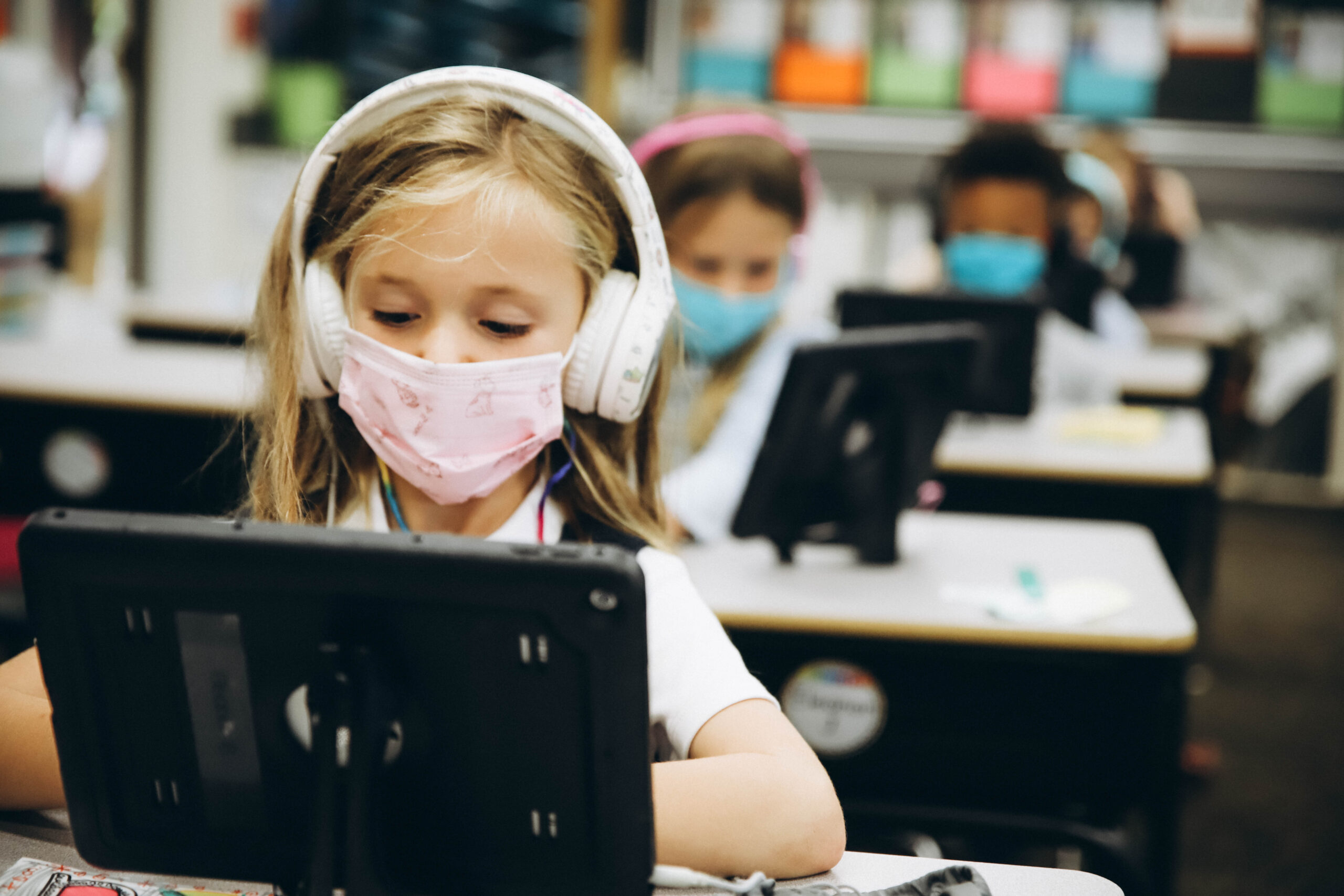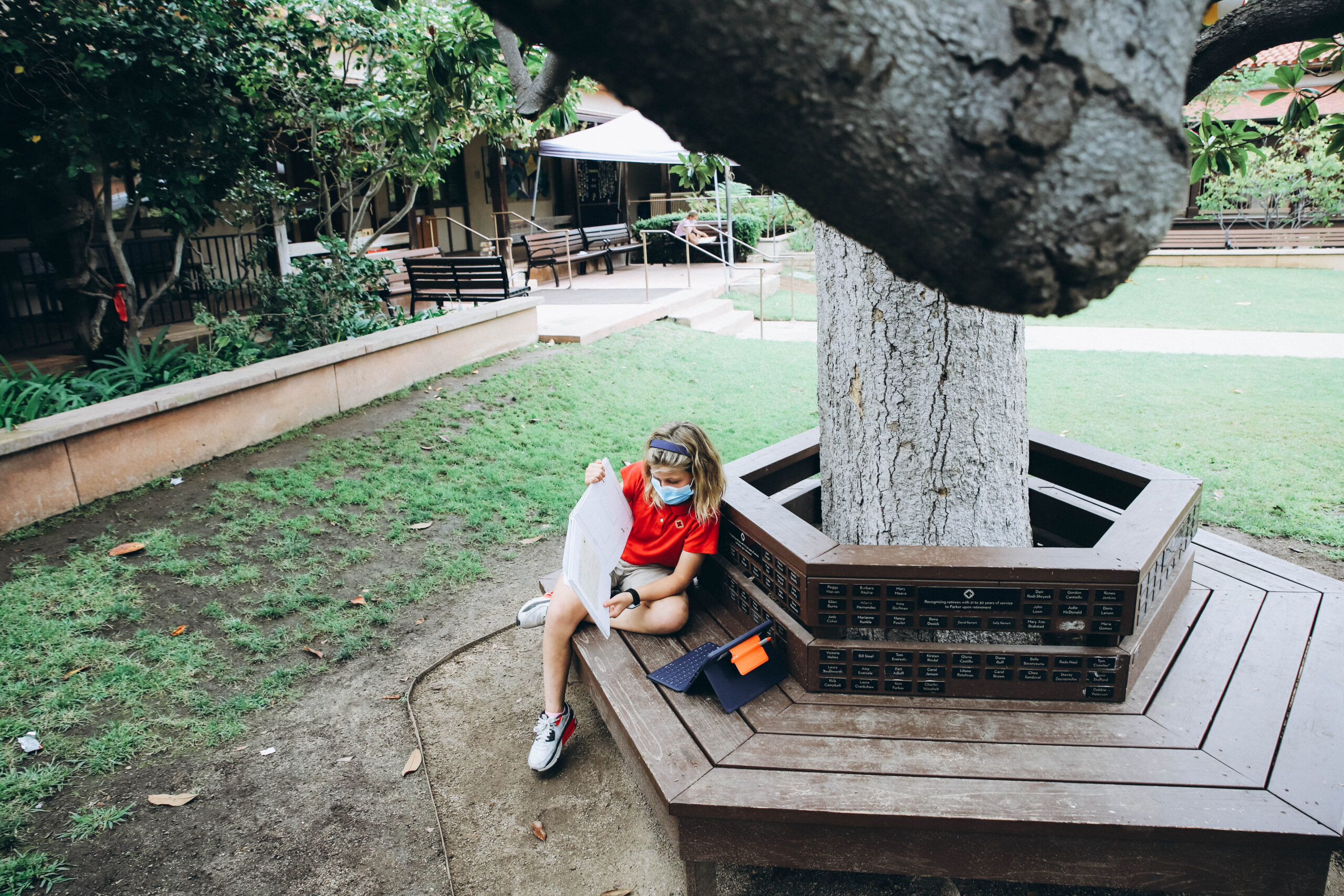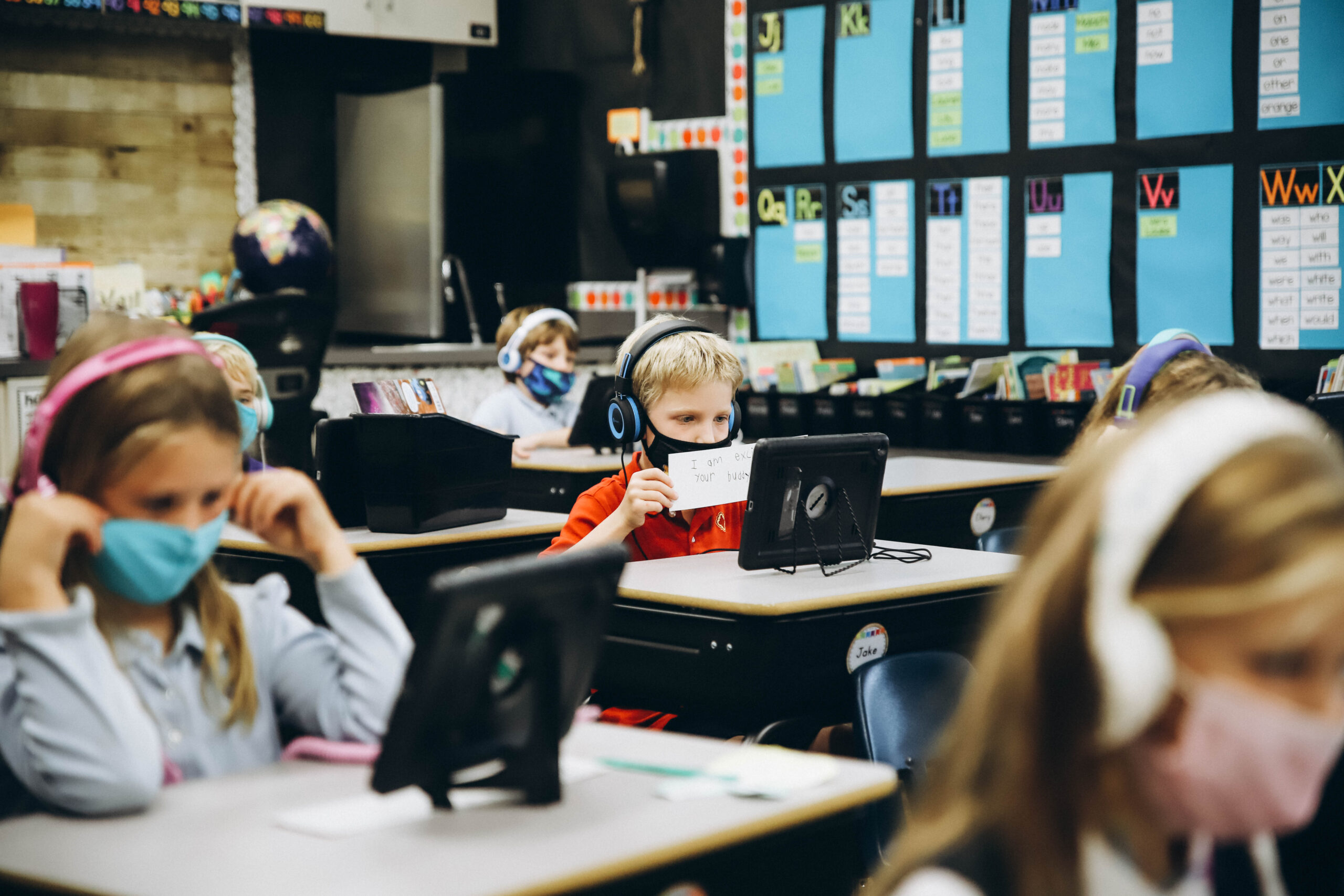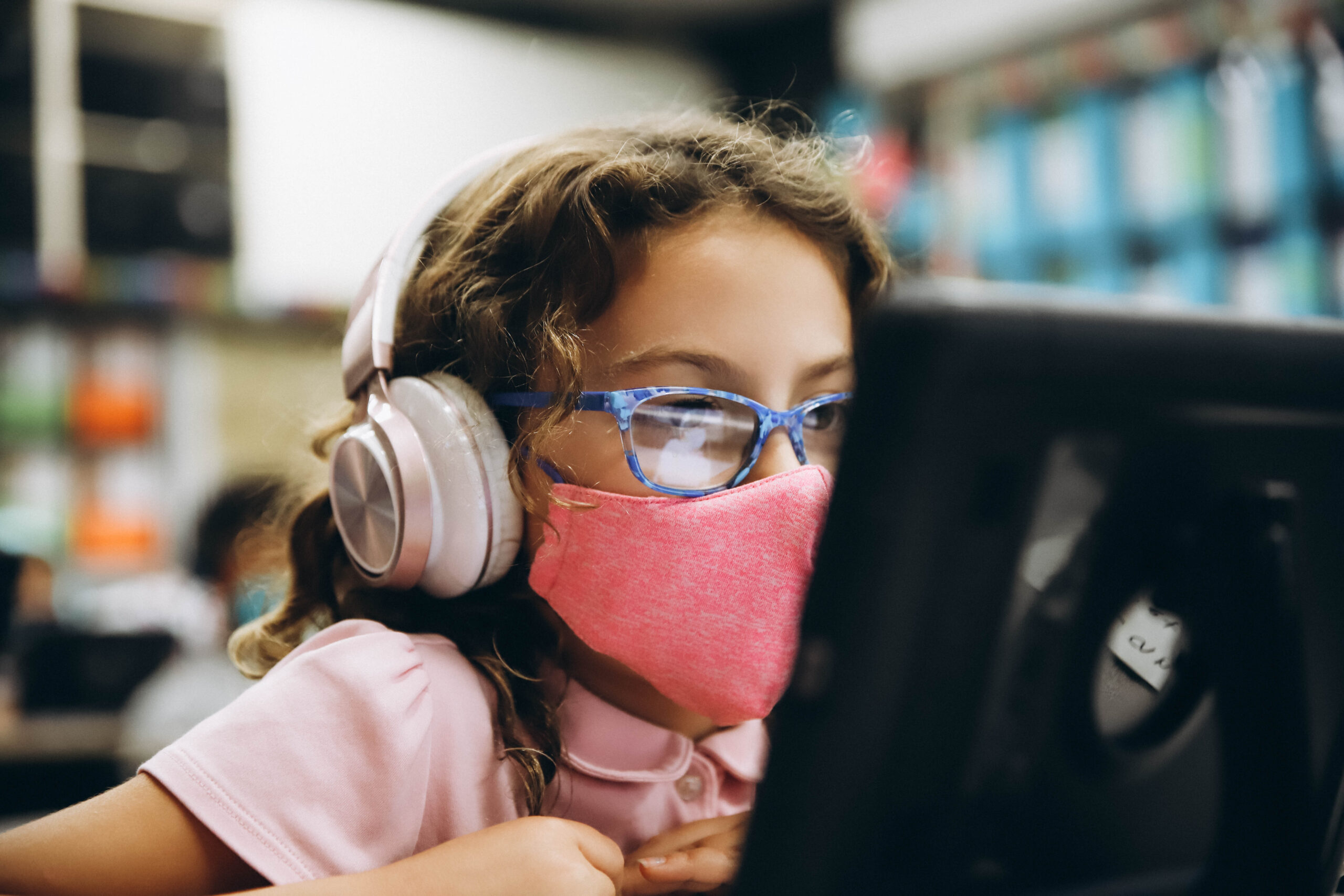
By Matthew Piechalak | [email protected]
A jumble of tiny voices arises from the classroom as Grade 1 students get to know their new Grade 4 reading buddies over a Zoom meeting.
“Mmm, I’d go with pancakes!”
“Did I mention my dragon lives underwater?”

“I think I’d rather live on the moon, because, I don’t know…Mars seems really scary.”
It’s the first meeting of the collaboration between Karishma Sinnott’s Grade 4 class and Becki Thompson’s Grade 1 class. The initial session begins with an exchange of personal information––names, age, siblings at Parker––and then moves on to icebreaker questions and would-you-rather inquiries.
From there the reading begins.
“Reading Buddies has been a tradition at Lower School for quite some time,” Becki says. “Students build a lasting relationship with [their] buddy, which creates a tight bond that we can build upon all year.”
The program is mutually beneficial. For Grade 1 students, the experience of listening to their older classmates read helps them build fluency. For Grade 4 students, it’s an opportunity for confidence-building, says Karishma.
“In class, some of them struggle with confidence, but they LOVE reading out loud to their buddies,” she says. “Reading to the littles makes them feel confident, proud, and they also practice their read aloud voices.
“This program is designed to be a symbiotic relationship,” Karishma says. “ The older students are wonderful mentors who truly love their little buddies.”
One of the overall benefits of the program is the power to build reading identities, says Parker Culturally Responsive Reading Specialist Rebecca Bellingham.
“We want young children to think of themselves as readers no matter how proficient they are at decoding. Being a reader is about loving stories, loving language, connecting with authors, and thinking about big ideas embedded within text––and the conversations the children can have about books fuels that sense of reading identity, that excitement for books, that connection to story,” Rebecca explains. “When we create opportunities for children to connect in a fun, engaging way through books and reading, we are helping them associate books and reading with joy––which is so important.”
Aside from designated times for partner reading, the buddies also get together other times to play games and even to assist with projects.
“In the Spring, Grade 1 students are asked to select an animal of their choice to create a detailed animal report,” Becki says. “Each year, our reading buddies are the guides by our sides, helping the first graders with their research. They teach the younger ones how to find information in online articles and how to condense the information into a list. Most of the Grade 4 students remember the project very vividly.”
“Last year, we helped them research, practice their presentations, and then when they were done, we took them little squishy animals to celebrate,” Karishma says.
“It’s important for the first graders to get a glimpse into life years down the road,” says Becki. “It’s the neatest thing to witness our traditions, learning, and connections go full circle.”
Along with modeling their fluency skills, Grade 4 students learn the art of the follow-up question, and build empathy and patience for their younger classmates.
“I want my students to learn how to be kind, respectful, sweet mentors,” she says. “I want them to read with energy and excitement and to interject their reading with joy.”
“The opportunity for fourth graders to engage a younger child in a story, or connect through books, helps them see themselves as reading models, as reading ambassadors,” says Rebecca, adding that it’s important to remember that older students are also building their reading identity. “ We want to give the older students practice modeling enthusiasm for reading, which might activate or amplify their enthusiasm in the process.”










